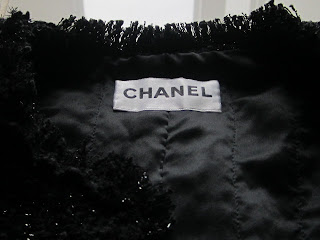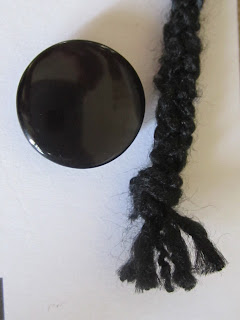And the finished product:
This jacket has been an absolute delight to sew and I'm going to make another 2! One with the left over fabric and then with a Linton Tweed. The boucle was a dream to handle and very forgiving. You can sew wonky seams and no one will know what lurks deep beneath that pile! Things I learned:
- If you're using a tried and true muslin, forget the 2" seam allowances. It's a waste and nuisance handling, however
- Notwithstanding the above, add slightly more seam allowance where ease is needed eg under armhole and across the shoulders. This is for shrinkage, and yes it did happen to me, but only very slightly. Some sewers think quilting does it, but I suspect in my case the fabric's bulk caused it. So next time I'll add another 2/8" sa onto the standard 5/8" only in areas needing greater ease.
- No more hand sewing the armhole lining together separately. In future I'll treat the sleeve as one piece by sewing the whole thing directly to the bodice, then bind the armhole. (Refer below's technique)
- Finally although it's been fun, next time I'll be doing it "the cheat's way" as shown in Threads magazine issue #128, "Shortcuts to a Designer Jacket". This is where all the seams are sewn by machine first. Then the lining is bagged out. Lastly the quilting is sewn. So stay tuned when this adventure starts in about April 2012. Bye for now.







